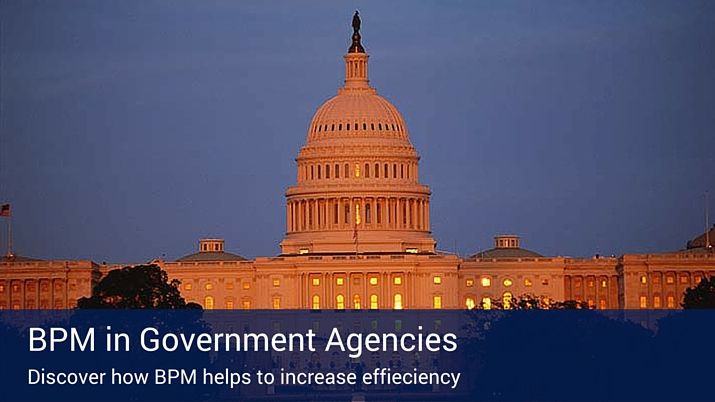Government Agencies are Using BPM to Increase Efficiency

Last Updated March 8, 2024
The 21st century is well on its way to becoming the era of efficiency. With the economic downturn forcing public and private-sector organizations to restructure, and the tremendous advances in digital technology in recent years, now is a time when governments are beginning to analyze ways to trim off bureaucratic waste and maximize technology usage to simplify the ways people obtain public services.
Streamlining the public sector, however, is no easy task, requiring officials to pinpoint precise areas of revision while maintaining essential jobs and services. Fortunately, governments can take a tip from the private sector and use Business Process Management (BPM) to help maximize efficiency.
The way governments are doing this is by focusing on “e-government,” the movement of government services to the internet. E-government seeks to make agencies and organizations more approachable for citizens by allowing users to connect in the same ways they communicate with friends and family. If we are getting increasingly used to shopping, learning and communicating online, why not allow access to our government resources the same way? Far beyond using the Internet as a collection of forms and data sheets, e-government allows users to connect in meaningful ways and gain an input into political processes in unprecedented ways.
The creation of an online interface to encourage citizen interaction does, however, present a number of logistical problems. The government is primarily focused on leveraging the power of the Internet to facilitate the provision of government services. In so doing, the government actively seeks ways to synthesize large collections of information to create a more user-friendly experience.
In Australia, for example, the Department of Finance and Administration used BPM to create a parliamentary workflow that simplifies communication between government staff. By reducing the time and effort it takes to contact a fellow parliamentarian, energies are refocused on legislation and citizen interaction. This process focus allows the government to work more efficiently.
American governments are also finding ways to use BPM to simplify complex processes. In California’s Humboldt County, local governments used BPM to redesign a dated, paper-based permitting system. Before using BPM, Humboldt County citizens relied on paper applications to obtain a variety of permits. As the county grew, however, the permit office found itself swamped with paper applications that it did not have the resources to process. The public, unable to track the status of applications, became frustrated as well. By analyzing the problem using BPM and software to move its forms online, Humboldt County was able to streamline the process considerably. Now, in addition to reducing the amount of paper the permit office has to process, the public can log into the government database and instantly receive a status update on any pending permits.
To learn how to implement BPM in your company, Click Here
The Department of Defense (DoD) has also used BPM to reduce waste and simplify procedures with American military servicemembers. In previous years, the DoD had physically separated the storage of unclassified and top-secret information. While this may make sense from a security standpoint, it presented a problem when classified servicemember information relied on athirdnetwork to link the two storage areas. In addition to the complexities of coordinating three separate inputs to achieve one goal, separate storage areas each required their own resources and manpower to maintain. By using BPM, however, the DoD was able to implement a new, centrally located, multi-level security system where all information is quickly obtained without compromising overall security. Now, effectiveness can be maintained without the need to coordinate information from several areas simultaneously.
These are just a few examples of how BPM is helping our government. With each passing year, more government organizations are finding ways to analyze their processes and streamline the ways information is stored and accessed. BPM remains the cornerstone of this re-evaluation of government efficiency. While we may be far away from a fully online government, BPM shows us that technology can be utilized in highly effective ways that facilitate our interaction with government services and significantly simplify the ways in which public officials work.





